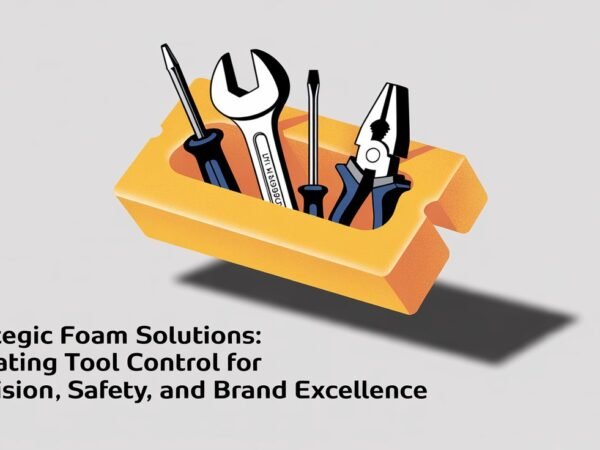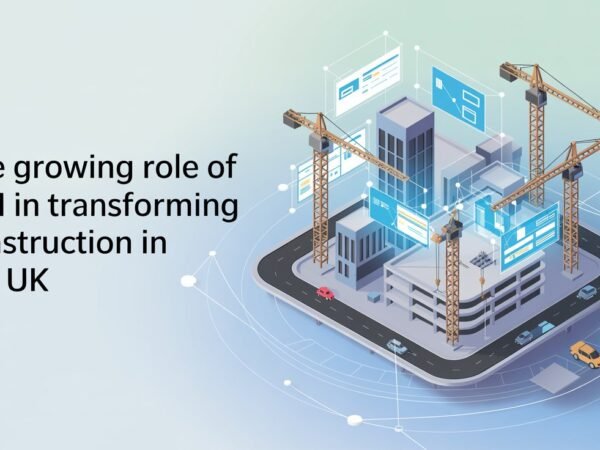Honestly, revenue operations for most businesses today are messy.
Between complex pricing models, multi-tiered subscriptions, usage-based fees, contract renewals, and cross-team approvals, just getting paid is tougher than ever. Sales is configuring products manually. Finance is still double-checking spreadsheets. Legal’s caught in the middle somewhere. No one is quite sure when the customer’s going to be billed, or for what.
Studies even show that up to 45% of companies suffer from recurring revenue leakage – usually thanks to poor data integration or slow processes.
The fix? Revenue lifecycle management from Salesforce. It’s not just another tool; it’s a complete rethink of how revenue gets handled across your organization. Salesforce RLM takes those disconnected tasks, automates what should be automated, and gives your team a central, intelligent system for everything from quotes to cash flow.
It doesn’t just make things faster. It makes them make sense.
What Is Salesforce Revenue Lifecycle Management (RLM)?
Salesforce Revenue Lifecycle Management is designed to handle every step of your company’s revenue operations, from the moment a quote is created to when revenue is finally recognized.
It’s not a bolt-on billing tool or a loosely connected module. Instead, it’s fully embedded within the Salesforce platform, allowing different teams (sales, finance, legal) to collaborate in one place. Pricing, contracts, billing, and forecasting all happen within the same ecosystem, which means fewer handoffs, fewer delays, and a lot less confusion.
RLM allows you to:
- Manage dynamic pricing models (subscription, usage-based, hybrid)
- Launch new products and bundles quickly
- Automate renewals, approvals, and compliance
- Stay audit-ready with built-in ASC 606 / IFRS 15 alignment
How Salesforce RLM Works
Let’s walk through it.
First, sales reps use guided selling tools to configure products and generate accurate quotes—no spreadsheet gymnastics required. Once approved, quotes become contracts automatically, routed through rule-based workflows.
Once signed, RLM triggers billing schedules based on deal terms, whether it’s one-time, recurring, or usage-based. Revenue recognition is handled automatically, aligned with global standards.
And RLM doesn’t stop there:
- Customer success is alerted for activations and renewals.
- Finance sees closed deals in real time.
- Legal has full visibility into live contracts.
Example: A SaaS company offers a 30-day trial. On Day 31, RLM automatically transitions the customer to a paid plan, bills them for usage, and schedules revenue recognition, no manual handoffs, no missed data, and zero delays.
Business Benefits of Salesforce RLM
There’s a lot to love about Salesforce RLM, but the real value lies in what it helps you stop doing. You can stop chasing down spreadsheets to check if billing matches the original quote. No more triple-checking invoice dates because someone forgot to update a field. No more last-minute scrambles before audits because contract data is scattered across six platforms.
Let’s break down a few of the big wins:
- Fewer Manual Processes, Fewer Mistakes: Manual revenue workflows are a breeding ground for errors. A single pricing change that doesn’t get updated across systems? That’s how deals die, or worse, how revenue slips through unnoticed. RLM automates quote generation, contract approvals, billing schedules, and revenue rules. Every handoff is tracked. Every dollar is accounted for.
- More Accurate Revenue Recognition: Whether you’re selling flat-rate software or usage-based subscriptions with dynamic pricing tiers, RLM ensures every cent is billed and recognized correctly. It aligns your revenue rules with global standards like ASC 606 and IFRS 15, without dragging your finance team into month-end madness.
- Predictable Renewals & Retention: RLM tracks every contract and entitlement. It automates renewal alerts and gives customer success teams the tools to retain business proactively. You also benefit from faster time to market for every new product.
What Businesses Accomplish with Salesforce RLM
Sure, RLM makes internal workflows smoother, but what does that actually mean for the business?
It means sales reps spend more time closing deals, not formatting quotes. Finance isn’t stuck deciphering spreadsheets. Customers aren’t chasing your team down to correct invoices. And leadership isn’t staring at revenue reports they don’t trust.
When implemented thoughtfully, Salesforce RLM enables outcomes like:
- Shorter Sales Cycles: Accurate quotes, faster approvals, instant contract generation.
- Improved Forecasting: With real-time visibility into quotes, billing, and revenue, finance can project with confidence.
- Better Customer Retention: Automated renewal alerts, contract tracking, and consistent billing experiences keep customers loyal, and prevent churn.
Even better? Everyone’s finally speaking the same language. Sales, finance, ops, and customer success are all working off the same data, in the same system, with the same goals.
That’s where Routine Automation comes in. As a certified Salesforce Partner, they specialize in designing and delivering tailored Revenue Cloud implementations that transform how companies earn, report, and grow. If your revenue ops feel fragmented, their team is a go-to resource for bringing order to the chaos.
Let’s break down some amazing outcomes:
Streamlined Quote and Order Management
For many teams, quoting is still a mess of Word docs, approval chains, and pricing guesswork.
With Salesforce RLM:
- Guided selling helps reps configure products correctly
- Central pricing rules ensure discounts are consistent
- Automated approvals speed up review cycles
- Instant order conversion removes manual re-entry
Flexibility & Scalability for Modern Models
Businesses are meant to change and grow, Salesforce RLM evolves with them.
Salesforce RLM supports:
- Mixed billing models (subscriptions + usage + licenses)
- Complex mid-cycle changes (upgrades, add-ons, prorated billing)
- New product rollouts with configurable bundles
It grows with your business, without requiring major reconfiguration.
Seamless Contract & Renewal Management
Contracts shouldn’t live in six tools and five inboxes.
RLM centralizes contract lifecycle management. It automatically generates contracts from quotes, routes approvals, tracks assets and entitlements, and kicks off renewals at the right time.
No more missed renewals means less revenue leakage.
Whether you manage recurring SaaS contracts or usage-based agreements, RLM ensures that every term is tracked, and every dollar is captured.
Better Alignment Across Teams
Siloed revenue teams are a problem.
Sales closes a deal, but finance can’t invoice it. Legal signs off on a contract, but ops doesn’t see it. Customer success doesn’t know what was promised, and marketing’s still running a promotion that expired last quarter. Sound familiar?
These disconnects create missed opportunities, and poor customer experiences.
Salesforce RLM brings everyone onto the same page, literally.
By centralizing revenue data and workflows on the Salesforce platform, it creates a shared source of truth across the organization. Everyone sees what’s sold, what’s billable, what’s recognized, and what’s up for renewal.
Salesforce RLM vs. CPQ: What’s the Difference, Really?
If you’re already using Salesforce CPQ (Configure, Price, Quote), you might be wondering: Isn’t that enough? Do I really need RLM too?
The short answer is it depends on how far down the revenue road you want to go.
CPQ is a powerful tool. It helps your sales team create accurate quotes for complex products quickly. Think of it as the front end of the sales process, product configuration, pricing logic, discount approvals. It’s fantastic for getting deals through the door.
But once that quote is signed? CPQ steps back, and Salesforce RLM takes over:
| Feature | Salesforce CPQ | Salesforce RLM |
| Quoting | ✅ Yes | ✅ Yes |
| Product Configuration | ✅ Yes | ✅ Yes |
| Contract Management | ❌ No | ✅ Yes |
| Billing Automation | ❌ No | ✅ Yes |
| Revenue Recognition | ❌ No | ✅ Yes |
| Renewals & Amendments | ❌ Limited | ✅ Fully Supported |
If your business model is simple and you’re just looking to streamline quoting, CPQ might be all you need. But if you’re navigating complex billing scenarios, contract renewals, or compliance headaches? You’ll want the full lifecycle support that RLM brings to the table.
Salesforce RLM vs. Revenue Cloud Analytics (RCA)
Now, let’s clear up another common confusion: What about Revenue Cloud Analytics? Isn’t that part of the same thing?
Revenue Cloud Analytics (RCA) is Salesforce’s analytics layer. It gives you deep insights into how your revenue is performing. The tool uses AI and prebuilt dashboards to show trends, surface anomalies, and forecast outcomes across your quote-to-cash pipeline.
But it’s important to understand that RCA is about visibility, while RLM is about execution.
Think of RCA as the dashboard and RLM as the engine. RCA tells you what’s happening; RLM makes it happen.
Here’s how they complement each other:
- RLM automates and tracks every revenue touchpoint.
- RCA takes that data and turns it into actionable insights.
- Together, they close the loop between doing and knowing.
If you’re serious about optimizing revenue performance, having both is a smart move.
Best Practices for Implementing Salesforce RLM
Rolling out a platform as powerful as Salesforce RLM isn’t something you do casually. You need a strategy. A roadmap. And a team that knows how to connect the dots across people, process, and platform.
Here are a few proven best practices to set you up for success:
- Audit Your Current Workflows: Start by asking some hard questions: Where are your revenue leaks? Are deals stalling in approvals? Is billing delayed by manual work? Mapping your quote-to-cash process helps identify the biggest pain points—and the biggest opportunities for impact.
- Define Clear Business Goals: Are you trying to reduce billing errors? Speed up time-to-cash? Improve renewal rates? The clearer your goals, the better your implementation will be tailored to drive real outcomes.
- Work with the Right Implementation Partner: This part’s key. Salesforce RLM is incredibly powerful, but it’s not plug-and-play. You need a team that understands both your business model and the intricacies of the Salesforce ecosystem.
- Plan for Change Management: Even the best tech can fail if your teams aren’t bought in. Train users early, build feedback loops, and keep the implementation aligned with the people who will actually use it.
Integrating Salesforce RLM with Existing Systems
The good news is that Salesforce RLM was built with integration in mind. Whether you’re using NetSuite, SAP, QuickBooks, Stripe, or a custom-built platform, RLM can connect to your existing tools through APIs and middleware.
Integration scenarios might include:
- Syncing quote and billing data with your ERP for accounting
- Feeding contract info into legal repositories or document systems
- Connecting billing and entitlement data to your customer support tools
- Bridging usage data from external platforms for real-time invoicing
And because RLM is native to Salesforce, the core CRM data layer stays intact, so customer records, quotes, invoices, and revenue details are always aligned.
Just remember: integration isn’t just about tech, it’s about data strategy. Clean data, good governance, and process consistency are just as important as the connectors themselves.
A strong partner will help you design integrations that scale.
A Smarter Revenue Strategy Starts Here
Revenue is the lifeblood of your business, but for many companies, managing that revenue is still way more complicated than it needs to be. From siloed systems to manual workarounds, old-school revenue ops processes are costing teams time, money, and momentum.
Salesforce Revenue Lifecycle Management changes that.
It gives your business a unified, automated way to handle every step of the revenue journey. It doesn’t just make your systems more efficient; it helps your teams align, your customers stay happier, and your revenue become more predictable and scalable.
With the right setup, and the right implementation partner, Salesforce RLM becomes more than a system. It becomes a foundation for smarter growth, cleaner data, and truly connected operations.
Do Read: High Demand, High Stress: The Reality of Property Management













